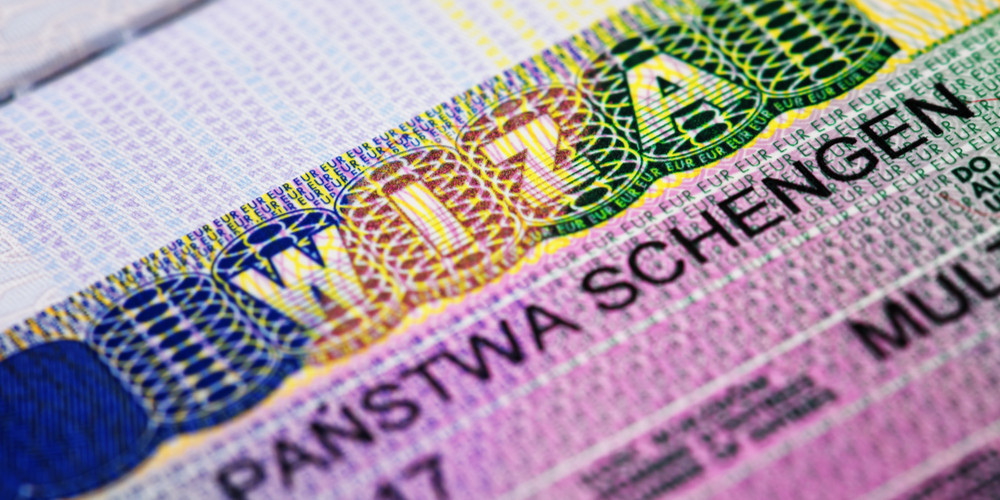
No wonder why Europe is holding a leading position among continents when it comes to the number of international travelers. Even though the number is mainly made up of the number of visitors traveling to tourism giants like Italy, Spain, and France, other European countries should not be forgotten during your trip. And that is the reason why today we are taking a breathtaking trip to one of the most underrated European travel destinations, Poland. Poland is an intriguing country at the cultural and historical intersection of Eastern and Western Europe. Today, as the largest of the former Eastern European republics and one of the most populous members of the European Union, the country plays a critical role in the region. Warsaw is Poland's capital and biggest city. Krakow, Wroclaw, Poznan, and Gdansk are among the other important cities of the country. Poland has 16 UNESCO World Heritage Sites, making it one of the most historical countries in the world. The country has a nearly 1,000-year history, with gorgeous medieval constructions, such as castles and palaces in every part of the country. The cities of Poland pulse with the energy of art and culture, and they are a fantastic place to start exploring everything the country has to offer. Now that we have established that Poland is a must-see country that should be on your bucket list, we can move on to one of the most important parts of your pre-departure to Poland, and as you can see from the title of the article, it is Polish visa. In this blog, we will be trying to answer your questions as "How to apply Poland visa?", “How much is Poland visa fee?", "Poland visa vs Schengen visa?" and we will also discuss Poland Schengen visa requirements.
Is Poland part of Schengen visa?
.jpg)
First of all, is Poland part of Schengen visa? Since 2007 Poland is an irreplaceable part of the Schengen area. What does Schengen even mean? The Schengen Area is a union of 26 European nations that have agreed to remove all passports and other forms of border control at their shared borders. For foreign travel, the region generally acts as a single jurisdiction with a common visa regime which means by obtaining a visa to one of the Schengen area countries, which in our case is Poland, you are entitled to visit any other 25 Schengen countries, too without any visa restrictions. So, if someone asks you, "is Poland part of Schengen visa?" the answer is “yes!”.
Though, it worth mentioning that not all travelers are asked to show a visa upon arrival. This leaves us with one very important question of "Do I need a Schengen visa to Poland?”. We can easily separate all the nationalities into two groups, the ones that need to show a visa upon arrival and the ones that have a visa-free entrance availability to the country. In order to see the full list of nationalities that can travel to Poland without a Schengen visa check our visa policy section.
Overall, there are three types of visas available for travel to Poland - short-term Schengen visas, transit visas, and long-term national Polish visas. You need to apply for a Poland Schengen visa to undertake your short trip. Usually, the trip's purpose might be tourism, visiting family or friends, and business trips. The Schengen visa allows the bearer to travel the Schengen area for up to 90 days every six months. This short-stay visa is valid in Poland and all other Schengen area member states for up to 90 days during a 180-day period. The 180-day term begins the moment you reach Poland or another Schengen nation.
 There are several types of Poland Schengen visa, with a Poland Business visa being one of the most preferred ones. A Poland Business visa allows you to enter Poland and reside in the country for up to 90 days within six months, as long as you meet the requirements. It allows the bearer to participate in business and professional activities such as attending meetings or conferences, conducting, or providing training, conducting internal audits, installing equipment, or providing other services to a customer. Other situations might fall under the Business visa category as well, and these include conferences, congresses, exhibitions, scientific and research activities, and so forth. Medical insurance is one of the most important documents while applying for a business visa. Overseas medical insurance with a minimum coverage of 30,000 € that is valid for the whole period of the required visa period and for all Schengen countries is a must-have. It is crucial to note that credit card-based medical insurance is not accepted. The terms and conditions must be specified on the insurance paperwork or in a separate confirmation letter.
A local medical report, a medical attestation, receipt of medical costs payment from a hospital or doctor in Poland, verifying the date of your appointment, and your medical status are required for a Poland visa for medical purposes.
Poland visiting family and friends visa is another one of the commonly applied Poland Schengen visa types. If you are visiting close relatives such as your spouse, children, parents, or grandparents, you will need a letter of invitation from the Polish authorities, which must be provided at the request of the inviting individual. You will also need a document proving the inviting person's status in the Schengen region. If the invitee stays at the inviting person's home, documentation connected to the property, such as a contract and utility payment, are also necessary. For minors, a “letter of consent” from both parents or legal guardians is required, as well as passport copies of both parents or legal guardians.
However, where will you need to head to submit your application? You will apply for a Poland family visit visa at one of the Poland visa application centers, embassies, or consulates in your country of residency; the responsible institution may differ according to your homeland. However, if none exist in your country, you must submit an application to the nearest embassy, which in most cases is the embassy or visa centers located in one of the neighboring countries.
There are several types of Poland Schengen visa, with a Poland Business visa being one of the most preferred ones. A Poland Business visa allows you to enter Poland and reside in the country for up to 90 days within six months, as long as you meet the requirements. It allows the bearer to participate in business and professional activities such as attending meetings or conferences, conducting, or providing training, conducting internal audits, installing equipment, or providing other services to a customer. Other situations might fall under the Business visa category as well, and these include conferences, congresses, exhibitions, scientific and research activities, and so forth. Medical insurance is one of the most important documents while applying for a business visa. Overseas medical insurance with a minimum coverage of 30,000 € that is valid for the whole period of the required visa period and for all Schengen countries is a must-have. It is crucial to note that credit card-based medical insurance is not accepted. The terms and conditions must be specified on the insurance paperwork or in a separate confirmation letter.
A local medical report, a medical attestation, receipt of medical costs payment from a hospital or doctor in Poland, verifying the date of your appointment, and your medical status are required for a Poland visa for medical purposes.
Poland visiting family and friends visa is another one of the commonly applied Poland Schengen visa types. If you are visiting close relatives such as your spouse, children, parents, or grandparents, you will need a letter of invitation from the Polish authorities, which must be provided at the request of the inviting individual. You will also need a document proving the inviting person's status in the Schengen region. If the invitee stays at the inviting person's home, documentation connected to the property, such as a contract and utility payment, are also necessary. For minors, a “letter of consent” from both parents or legal guardians is required, as well as passport copies of both parents or legal guardians.
However, where will you need to head to submit your application? You will apply for a Poland family visit visa at one of the Poland visa application centers, embassies, or consulates in your country of residency; the responsible institution may differ according to your homeland. However, if none exist in your country, you must submit an application to the nearest embassy, which in most cases is the embassy or visa centers located in one of the neighboring countries.
What are the general Poland Schengen visa requirements?

Most importantly, you will need a completely filled Schengen visa form Poland in English or Polish language; also, do not forget the fact that Schengen visa form Poland must be signed and dated by the applicant himself. A passport that is signed by the bearer and has a minimum validity of three months beyond the date of your departure from Poland is needed. It is also worth noting that your passport cannot be more than ten years old. Meanwhile, other Poland Schengen visa requirements include two photos of the applicant that must be no more than six months old. Also, a copy of your ID card that is valid for at least three months after the date of your departure from Poland is required. Let us do not forget about copies of your passport's main page and any previous Schengen visas, as well. And last but not least, you are expected to showcase your flight reservations, and valid hotel reservations are included in the travel itinerary. To travel to Poland and acquire a visa, you usually need to show that you have a certain amount of money. For stays of up to three days, you must show that you have €67.76 in your pocket. The daily price for days longer than three days is €22.60, which is reduced to €4.52 if you can show you have pre-booked accommodation. However, how to apply Poland visa? The typical processing time for a tourist visa to Poland is between 5 and 20 days. It is worth mentioning the fact that Poland Schengen visa processing time might vary, and it is solely dependent on the nation from which you are applying for a visa, which usually is your homeland. Also, how much is Poland visa fee? The Poland Schengen visa fee has been set as 80 EUR from the 2nd of February of 2020 and must be paid when the application is submitted. Bear that in your mind; you might also be required to pay some extra administrative costs. The EU, and Albania, Armenia, Azerbaijan, Bosnia and Herzegovina, Georgia, Kosovo, North Macedonia, Moldova, Montenegro, Russia, Serbia, and Ukraine reached an agreement that decreased the Poland Schengen visa fee for nationals of these countries to 35 euros. Interestingly enough, there is no visa cost for children under the age of six. How to apply Poland visa? You must apply to the Republic of Poland's embassy or consulate in your country of residence or a visa application center operating on behalf of the embassy.


